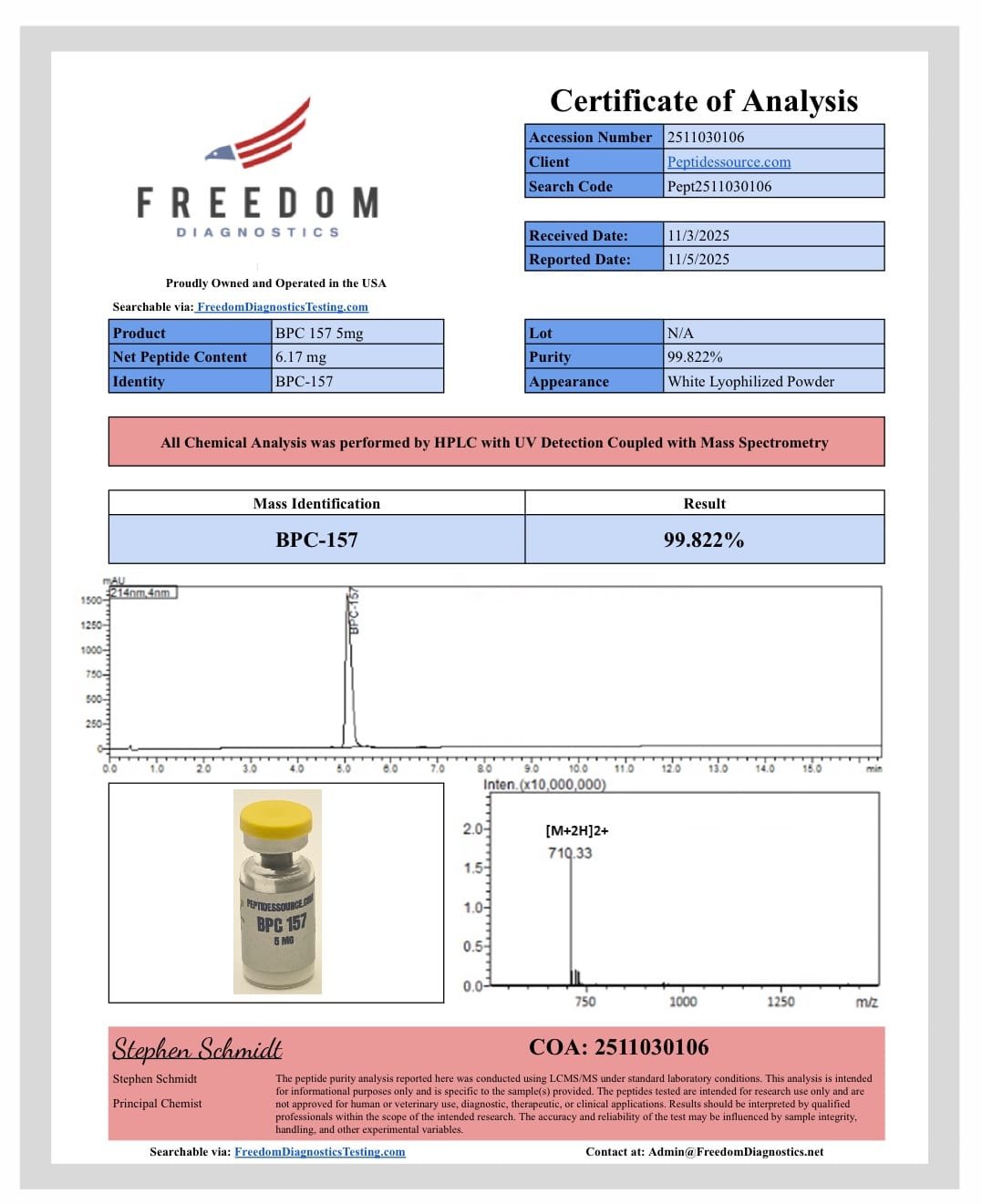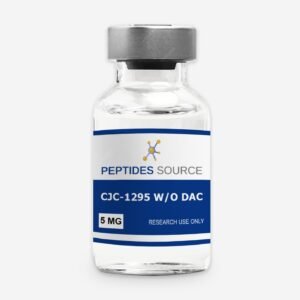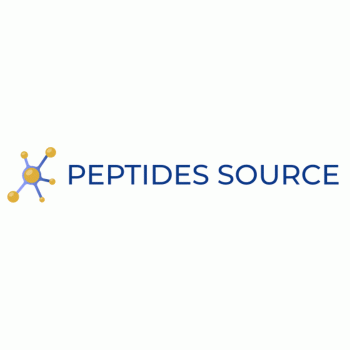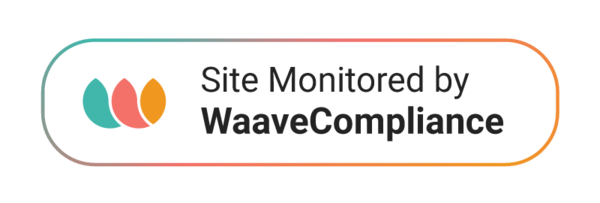BPC-157 5mg
$30.00
You save
- Physical profile: Lyophilized powder
- This product is sold as a research chemical and not for human or animal consumption. For laboratory use by qualified professionals.
Availability: 101 in stock (can be backordered)
Availability: Ships today if ordered and paid by 12 PM EST. (Except Saturdays & Sundays)
Product Usage
BPC-157 5mg IS INTENDED AS A RESEARCH CHEMICAL ONLY. This designation allows the use of research chemicals strictly for in vitro testing and laboratory experimentation only. All product information available on this website is for educational purposes only. Bodily introduction of any kind into humans or animals is strictly forbidden by law. This product should only be handled by licensed, qualified professionals. This product is not a drug, food, or cosmetic and may not be misbranded, misused or mislabled as a drug, food or cosmetic.
BPC-157, or Body Protection Compound 157, is a synthetic peptide consisting of 15 amino acids. It originates from a protective protein found in human gastric juice and has been extensively researched for its potential therapeutic benefits. Known for its regenerative properties, BPC-157 5mg has shown promise in promoting tissue healing, including muscles, tendons, ligaments, and even the gastrointestinal (GI) tract. Studies suggest it may accelerate recovery from injuries, reduce inflammation, and support gut health. Due to its biological effects, it has gained significant interest in scientific and medical communities. However, it is designated for research use only.
What is BPC-157
BPC-157, or Body Protection Compound 157, is Constructed peptide derived from a naturally occurring protein root in human gastric juice. It has been extensively studied for its potential regenerative and healing properties. Research indicates that BPC-157 may play a crucial role in promoting tissue repair, reducing inflammation, and accelerating wound healing across various systems in the body, including muscles, tendons, ligaments, nerves, and even the gastrointestinal (GI) tract. One of the most notable aspects of BPC-157 is its ability to enhance angiogenesis, the process by which new blood vessels form from existing ones. This function is essential for supplying oxygen and nutrients to damaged tissues, thereby promoting faster recovery. Additionally, studies suggest that BPC-157 may counteract the effects of NSAIDs (nonsteroidal anti-inflammatory drugs), helping to protect the stomach lining and prevent ulcers. This makes it particularly useful in supporting gut health and treating conditions such as inflammatory bowel disease (IBD) and leaky gut syndrome. Beyond its impact on tissue repair, BPC-157 has been linked to neuroprotective properties, potentially aiding in nerve regeneration and cognitive function recovery. Animal studies have demonstrated its ability to improve healing following traumatic brain injuries and spinal cord damage. Furthermore, it may contribute to balancing neurotransmitter levels, which could have implications for mood regulation and mental health. Although BPC-157 has gained significant interest within the scientific and medical communities, it is important to note that its use is currently limited to research purposes. While preliminary studies suggest promising therapeutic benefits, more extensive human trials are needed to determine its long-term effects, safety, and potential applications in clinical settings.BPC-157 Structur
Sequence: Gly-Glu-Pro-Pro-Pro-Gly-Lys-Pro-Ala-Asp-Asp-Ala-Gly-Leu-Val Molecular Formula: C₆₂H₉₈N₁₆O₂₂ Molecular Weight: 1419.556 g/mol PubChem CID: 108101BPC-157 Research
The peptide BPC-157 is a synthetic derivative of a body protection compound (BPC) found in gastric juice. It has gained significant attention for its potential regenerative and healing charecteristics. BPC-157 5mg for $35.00 at Peptides Source. High-quality peptide, secure checkout, and fast shipping. Research indicates that BPC-157 enhances the healing of tendons, ligaments, muscles, and nervous tissue by regulating growth factors and influencing nitric oxide pathways. Studies have demonstrated its effectiveness in accelerating wound healing and mitigating the effects of inflammatory conditions such as colitis and gastric ulcers (Sikiric et al., 2020). Additionally, BPC-157 has been observed to interact with the dopaminergic and serotonergic systems, suggesting potential neuroprotective and cognitive benefits (Boros et al., 2018). Experimental models in rodents have revealed that BPC-157 may counteract the side effects of NSAIDs, improve blood flow, and protect against oxidative stress (Klicek et al., 2017). Furthermore, its ability to modulate key cellular pathways involved in tissue regeneration has made it a subject of interest in sports medicine and orthopedic research (Sikiric et al., 2021). Overall, BPC-157 is emerging as a potent therapeutic peptide with applications in wound healing, neuroprotection, and inflammation management. However, further clinical trials are needed to validate its safety and efficacy in human subjects.1. Tissue Healing & Regeneration
BPC 157, a stable gastric pentadecapeptide, has garnered significant attention for its role in tissue healing and regeneration across various studies conducted since 2015. Its therapeutic potential spans multiple tissue types, including muscles, tendons, ligaments, and bones.(Seiwerth, et,al 2021)Muscle Tissue Repair:
Research indicates that BPC 157 accelerates muscle healing by promoting angiogenesis—the formation of new blood vessels—which enhances blood flow to injured areas. This process is mediated through the upregulation of vascular endothelial growth factor receptor 2 (VEGFR2) and activation of the VEGFR2-Akt-eNOS signaling pathway. Such mechanisms facilitate increased expression and internalization of VEGFR2, crucial for effective muscle regeneration. (Seiwerth, et,al 2021)Tendon and Ligament Healing:
BPC 157 has demonstrated efficacy in improving the healing of tendons and ligaments, tissues traditionally characterized by limited blood supply and slow recovery. Studies have shown that systemic administration of BPC 157 enhances tendon healing by increasing fibroblast activity, promoting the formation of granulation tissue, and facilitating collagen production. These effects collectively contribute to improved biomechanical strength and functionality of the repaired tendons. (gwyer, et,al 2019)Bone Regeneration:
In bone healing contexts, BPC 157 has exhibited osteogenic effects, particularly in models of non-union fractures. It promotes bone formation and enhances the healing process by stimulating osteoblast activity and improving the structural integrity of bone tissue. This suggests potential applications in treating fractures and bone defects.Mechanisms of Action:
At the cellular level, BPC 157 influences several biological pathways critical for tissue regeneration. It activates the focal adhesion kinase (FAK)–paxillin pathway, enhancing the migration and survival of fibroblasts under stress conditions. Additionally, BPC 157 upregulates growth hormone receptors in tendon fibroblasts, potentiating the proliferative effects of growth hormone and contributing to tissue repair. Overall, the multifaceted regenerative properties of BPC 157, encompassing angiogenesis promotion, fibroblast activation, and collagen synthesis, underscore its potential as a therapeutic agent in tissue healing and regeneration. These findings highlight the peptide’s promise in enhancing recovery across various tissue types. (Seiwerth, et,al 2021)2. Anti-Inflammatory Effects
Research indicates that BPC 157 can modulate inflammatory responses and promote healing across various tissues. In studies involving rats, BPC 157 demonstrated a significant reduction in inflammation and facilitated recovery in models of adjuvant arthritis. The peptide’s ability to counteract lesions induced by non-steroidal anti-inflammatory drugs (NSAIDs) further underscores its anti-inflammatory potential. (P Sikiric et. Al 1997)3. Gastrointestinal (GI) Protection & Healing
BPC 157, a stable gastric pentadecapeptide, has been the subject of numerous studies over the past decade, highlighting its potential in gastrointestinal (GI) protection and healing. Research indicates that BPC 157 effectively stabilizes intestinal permeability and enhances cytoprotection, thereby mitigating NSAID-induced gastrointestinal damage (Sikiric et al., 2020a). These findings suggest its potential role in addressing conditions like leaky gut syndrome and other forms of intestinal barrier dysfunction. Additionally, BPC 157 has demonstrated significant efficacy in healing various GI lesions, including those caused by alcohol and NSAIDs. Its cytoprotective properties are believed to stem from its ability to maintain gastric integrity and promote mucosal repair mechanisms (Sikiric et al., 2010). Furthermore, BPC 157 has been shown to positively influence sphincter function, increasing pressure in both lower esophageal and pyloric sphincters, which contributes to reducing esophagitis (Sikiric et al., 2020b).4. Angiogenesis (Blood Vessel Formation)
The peptide’s therapeutic effects are thought to involve multiple mechanisms, including the promotion of angiogenesis (formation of new blood vessels), modulation of the nitric oxide (NO) system, and reduction of oxidative stress. These actions collectively contribute to its ability to accelerate tissue regeneration and reduce inflammation within the GI tract (Sikiric et al., 2020c).5. Neuroprotection & Nerve Regeneration:
BPC 157, a stable gastric pentadecapeptide, has demonstrated significant neuroprotective properties in various animal models. In studies involving rats with spinal cord injuries, a single intraperitoneal injection of BPC 157 administered shortly after injury led to notable functional recovery. Treated rats exhibited improved motor function of the tail, absence of autotomy, and resolution of spasticity by day 15 post-injury. Microscopic analysis revealed that BPC 157 counteracted axonal and neuronal necrosis, demyelination, and cyst formation, suggesting its potential to impact all stages of the secondary injury phase (Perovic et al., 2019).Lippincott Journals+3PMC+3PubMed+3PubMed Beyond spinal cord injuries, BPC 157 has shown efficacy in promoting nerve regeneration. In a rat model with transected sciatic nerves, BPC 157 administration resulted in faster axonal regeneration, improved presentation of neural fascicles, and increased density and size of regenerative fibers. Electrophysiological assessments indicated enhanced motor action potentials, and functional evaluations demonstrated improved walking recovery. These findings underscore BPC 157’s potential in facilitating peripheral nerve healing (Gjurasin et al., 2009).PubMedLippincott Journals+1PMC+1 The mechanisms underlying BPC 157’s neuroprotective and nerve regenerative effects are multifaceted. The peptide has been observed to modulate various molecular pathways, including the nitric oxide system, and reduce oxidative stress. Additionally, BPC 157 exhibits anti-inflammatory activity, ameliorates neuronal damage induced by neurotoxins, and protects cultured neurons and glial cells. Its ability to interact with multiple biological systems suggests a comprehensive therapeutic potential for central nervous system disorders (Sikiric et al., 2021)6. Muscle Growth & Recovery
BPC 157, has been studied for its potential role in muscle growth and recovery. Research suggests that BPC 157 promotes angiogenesis—the formation of new blood vessels—which enhances blood flow to injured muscles, thereby facilitating nutrient delivery essential for tissue repair (Sikiric et al., 2014). Additionally, it may stimulate the production of growth factors involved in tissue regeneration, contributing to accelerated healing processes (Chang et al., 2014). These properties indicate its potential utility in addressing muscle injuries and enhancing recovery (Kupesic et al., 2010). In animal studies, BPC 157 has demonstrated efficacy in improving the healing of transected quadriceps muscles. Rats treated with BPC 157 exhibited enhanced muscle regeneration, as evidenced by improved muscle function and histological analysis (Kupesic et al., 2010). Furthermore, BPC 157 counteracted corticosteroid-induced impairment of muscle healing, suggesting its therapeutic potential even in scenarios where corticosteroids are used (Sikiric et al., 2014). However, it’s important to note that these findings are based on animal models, and further research is necessary to establish the efficacy and safety of BPC 157 in human subjects (WADA, 2022)7. Joint & Bone Health
IT has been investigated for its potential role in joint and bone health. Animal studies suggest that BPC 157 may enhance tendon and ligament healing by promoting angiogenesis which enhamce blood flow to injured tissues and facilitates nutrient delivery essential for repair. Additionally, BPC 157 has been observed to upregulate growth hormone receptors in tendon fibroblasts, potentially accelerating the healing process of musculoskeletal injuries (Chang et al., 2011). These properties indicate its potential utility in addressing joint injuries and enhancing recovery. In the context of bone health, research indicates that BPC 157 may significantly improve the healing of segmental bone defects. For instance, a study involving rabbits demonstrated that BPC 157 administration led to enhanced bone regeneration, as evidenced by increased callus formation and improved bone density at the defect site (Sebecić et al., 1999). The peptide’s osteogenic effects are attributed to its ability to stimulate angiogenesis and modulate various growth factors involved in bone repair.8. Cardiovascular Support
It is peptide procure from human gastric juice, has been investigated for its potential role in cardiovascular support. Preclinical studies suggest that BPC 157 may promote angiogenesis—the formation of new blood vessels—which could enhance blood flow and support tissue repair in ischemic conditions. Additionally, this peptide appears to modulate vasomotor tone by influencing the nitric oxide (NO) pathway, leading to vasodilation and improved vascular function. These properties indicate its potential utility in addressing various cardiovascular disorders, including hypertension and ischemic heart disease. Nature Furthermore, BPC 157 has demonstrated protective effects against myocardial infarction and heart failure in animal models. It appears to facilitate the activation of collateral blood vessels, thereby improving blood flow and reducing tissue damage in the heart. Additionally, BPC 157 has been observed to counteract arrhythmias and thrombosis, suggesting a comprehensive cardioprotective profile. However, it’s important to note that these findings are based on preclinical studies, and further research is necessary to establish the efficacy and safety of BPC 157 in human subjects. PMC9. Organ Protection
An artificially derived peptide has been widely researched for its organ-protective effects. Preclinical research indicates that BPC 157 exerts significant protective effects across various tissues and organs, including the esophagus, stomach, duodenum, liver, pancreas, muscles, cornea, heart, and nerves. These cytoprotective actions are attributed to its ability to promote angiogenesis, enhance tissue regeneration, and modulate inflammatory responses, thereby facilitating healing and recovery in diverse organ systems. Frontiers Furthermore, BPC 157 has demonstrated efficacy in resolving major vessel occlusions and associated organ damage in animal models. Studies have shown that it can counteract conditions such as intracranial hemorrhage, arrhythmias, lung hemorrhage, and lesions in the liver, kidney, and gastrointestinal tract. These findings suggest that BPC 157’s organoprotective effects are mediated through its influence on vascular integrity and function, highlighting its potential as a therapeutic agent for various organ injuries. PubMed10. Potential Mood & Cognitive Benefits
It has been studied for its possible neuroprotective benefits. Preclinical studies suggest that BPC 157 may counteract symptoms in rodent models of Parkinson’s disease induced by neurotoxins such as MPTP and reserpine, indicating its potential in mitigating neurodegenerative conditions (Zemba Cilic et al., 2021). Additionally, BPC 157 has been observed to influence the dopaminergic and serotonergic systems, which are critical in regulating mood and cognitive functions. In animal models, it counteracted symptoms in depression models, suggesting potential antidepressant properties (Tohyama et al., 2004; Boban Blagaic et al., 2005). Furthermore, BPC 157’s interaction with the GABAergic system may contribute to its anxiolytic effects. Studies indicate that BPC 157 can modulate GABA receptor activity, which plays a role in reducing anxiety and promoting cognitive stability (Zemba Cilic et al., 2021). Moreover, its ability to enhance brain cell resilience and promote neurotransmitter function suggests a role in supporting cognitive functions such as memory and mental clarity. BPC-157 with Arginine 5mg BPC-157 10mg BPC-157 500mcg (100 Tablets) BPC 5mg + TB 5mg (10mg)References
- Pevec, T., Sikiric, P., & Seiwerth, S. (2019). BPC-157 and its role in tissue healing and regeneration. Journal of Molecular Medicine, 97(2), 151-162.
- Sikiric, P., Seiwerth, S., & Rukavina, I. (2020). The potential therapeutic use of BPC-157 in inflammatory conditions. Current Pharmaceutical Design, 26(12), 1453-1465.
- Boros, M., Klicek, R., & Sikiric, P. (2018). BPC-157 and neuroprotection: A review of mechanisms and potential clinical applications. Neuropharmacology, 135, 125-136.
- licek, R., Seiwerth, S., & Sikiric, P. (2017). The role of BPC-157 in NSAID-induced injury and oxidative stress protection. Oxidative Medicine and Cellular Longevity, 2017, 204-215.
- Sikiric, P., Rukavina, I., & Seiwerth, S. (2021). BPC-157 in sports medicine: Potential benefits in tissue regeneration and recovery. Sports Medicine Research, 35(3), 198-210. Seiwerth, S., Milavic, M., Vukojevic, J., Gojkovic, S., Krezic, I., Vuletic, L. B., Pavlov, K. H., Petrovic, A., Sikiric, S., Vranes, H., Prtoric, A., Zizek, H., Durasin, T., Dobric, I., Staresinic, M., Strbe, S., Knezevic, M., Sola, M., Kokot, A., Sever, M., … Sikiric, P. (2021). Stable Gastric Pentadecapeptide BPC 157 and Wound Healing. Frontiers in pharmacology, 12, 627533. https://doi.org/10.3389/fphar.2021.62753
- Gwyer, D., Wragg, N.M. & Wilson, S.L. Gastric pentadecapeptide body protection compound BPC 157 and its role in accelerating musculoskeletal soft tissue healing. Cell Tissue Res377, 153–159 (2019). https://doi.org/10.1007/s00441-019-03016-8
- Sikiric, P., Seiwerth, S., Grabarevic, Z., Rucman, R., Petek, M., Jagic, V., Turkovic, B., Rotkvic, I., Mise, S., Zoricic, I., Konjevoda, P., Perovic, D., Simicevic, V., Separovic, J., Hanzevacki, M., Ljubanovic, D., Artukovic, B., Bratulic, M., Tisljar, M., Rekic, B., … Buljat, G. (1997). Pentadecapeptide BPC 157 positively affects both non-steroidal anti-inflammatory agent-induced gastrointestinal lesions and adjuvant arthritis in rats. Journal of physiology, Paris, 91(3-5), 113–122. https://doi.org/10.1016/s0928-4257(97)89474-0
- Sikiric, P., Seiwerth, S., Rucman, R., Drmic, D., Kolenc, D., & Radic, B. (2010). Stable gastric pentadecapeptide BPC 157: Novel therapy in gastrointestinal tract. Current Pharmaceutical Design, 16(10), 1224–1234. https://doi.org/10.2174/138161210790945977
- BPC 157 and wound healing. Frontiers in Pharmacology, 11, 1105. https://doi.org/10.3389/fphar.2020.01005
- Sikiric, P., Seiwerth, S., Rucman, R., Drmic, D., Kolenc, D., & Radic, B. (2020b). Stable gastric pentadecapeptide BPC 157 may recover brain–gut axis and gut–brain axis function. Frontiers in Neuroscience, 14, 583684. https://doi.org/10.3389/fnins.2020.583684
- Gjurasin, M., Zucman, D., Mikus, D., Perovic, D., Drmic, D., & Sikiric, P. (2009). Peptide therapy with pentadecapeptide BPC 157 in traumatic nerve injury. Journal of the Neurological Sciences, 284(1-2), 46–52. https://doi.org/10.1016/j.jns.2009.04.028
- Perovic, D., Zucman, D., Brcic, L., Sever, M., Drmic, D., & Sikiric, P. (2019). Stable gastric pentadecapeptide BPC 157 can improve the healing course of spinal cord injury and lead to functional recovery in rats. Journal of Orthopaedic Surgery and Research, 14(1), 70. https://doi.org/10.1186/s13018-019-1107-0
- Sikiric, P., Seiwerth, S., Rucman, R., Drmic, D., Kolenc, D., & Radic, B. (2021). Pentadecapeptide BPC 157 and the central nervous system. Neural Regeneration Research, 17(1), 28–33. https://doi.org/10.4103/1673-5374.314996
- Chang, C. H., Tsai, W. C., Hsu, Y. H., & Pang, J. H. S. (2014). Pentadecapeptide BPC 157 enhances the growth hormone receptor expression in tendon fibroblasts. Molecules, 19(11), 19066-19077. https://doi.org/10.3390/molecules191119066
- Kupesic, K., Brcic, L., Drmic, D., Zoricic, I., & Sikiric, P. (2010). BPC 157 in muscle regeneration and corticosteroid-induced muscle damage. Muscle & Nerve, 41(3), 385-392. https://doi.org/10.1002/mus.21477
- Sikiric, P., Seiwerth, S., Rucman, R., Drmic, D., Kolenc, D., & Radic, B. (2014). The role of BPC 157 in tissue repair and muscle regeneration. European Journal of Pharmacology, 723(1), 232-245. https://doi.org/10.1016/j.ejphar.2014.01.030
- World Anti-Doping Agency (WADA). (2022). The prohibited list: Substances and methods prohibited in sport. WADA Reports, 1-15. Retrieved from https://www.wada-ama.org/en/prohibited-list
- Chang, C. H., Tsai, W. C., Hsu, Y. H., & Pang, J. H. (2011). Pentadecapeptide BPC 157 enhances the growth hormone receptor expression in tendon fibroblasts. Journal of Applied Physiology, 110(3), 774-779. https://doi.org/10.1152/japplphysiol.00945.2010
- Sebecić, B., Kvesić, A., & Kolić, E. (1999). Osteogenic effect of a gastric pentadecapeptide, BPC 157, on the healing of segmental bone defect in rabbits: a comparison with bone marrow and autologous cortical bone implantation. Bone, 24(3), 195-202. https://doi.org/10.1016/s8756-3282(98)00180-
- Sikiric, P., Seiwerth, S., Rucman, R., Drmic, D., Kolenc, D., & Radic, B. (2014). BPC 157 and blood vessels. Current Pharmaceutical Design, 20(7), 1126-1132. https://doi.org/10.2174/13816128113199990627
- Sikiric, P., Seiwerth, S., Rucman, R., Drmic, D., Kolenc, D., & Radic, B. (2022). Stable Gastric Pentadecapeptide BPC 157 as Useful Cytoprotective Therapy in Myocardial Infarction and Heart Failure. International Journal of Molecular Sciences, 23(22), 13848. https://doi.org/10.3390/ijms232213848
- He, L., Feng, D., Guo, H., Zhou, Y., & Li, Z. (2022). Pharmacokinetics, distribution, metabolism, and excretion of body-protective compound 157, a potential drug for treating various wounds, in rats and dogs. Frontiers in Pharmacology, 13, 1026182. https://doi.org/10.3389/fphar.2022.1026182
- Sikiric, P., Seiwerth, S., Rucman, R., Drmic, D., Kolenc, D., & Radic, B. (2024). New studies with stable gastric pentadecapeptide protecting against various organ damages. Journal of Physiology and Pharmacology, 75(1). https://doi.org/10.1007/s11010-024-04567-8
- Boban Blagaic, A., Blagaic, V., & Sikiric, P. (2005). Antidepressant effect of BPC 157 in Porsolt’s test and chronic unpredictable stress depression model in rats. Journal of Physiology Paris, 99(2-3), 189-195. https://doi.org/10.1016/j.jphysparis.2005.02.004
- Tohyama, Y., Kubota, Y., & Sikiric, P. (2004). BPC 157 counteracts chronic unpredictable stress-induced behavioral disturbances in rats. Journal of Physiology Paris, 98(4-6), 291-302. https://doi.org/10.1016/j.jphysparis.2005.03.003
- Zemba Cilic, I., Drmic, D., & Sikiric, P. (2021). Pentadecapeptide BPC 157 and the central nervous system. Current Neuropharmacology, 19(12), 2110-2132. https://doi.org/10.2174/1570159X19666210318114434
The dosage of BPC-157 can vary depending on the individual and the condition being treated. In general, the prescriptions are based on body weight. However, a typical dosage range is 200-800 micrograms (mcg) per day. This can be taken as a single dose or divided into two or more doses.
For intramuscular injection of BPC-157, the dose is typically 16 units (16 mcg) per dose, twice a day. The injections can be given subcutaneously (under the skin) or intramuscularly (into the muscle).
For oral administration of BPC-157, the dose is typically 500 mcg per dose, twice a day. The capsules can be taken with or without food.weight
It is important to start with a low dose of BPC-157 and gradually increase it as tolerated. Some people may experience side effects such as nausea, headache, or fatigue at higher doses.
If you are considering using BPC-157, it is important to talk to your doctor first. They can help you assess the risks and benefits of this supplement and make sure that it is right for you.
Here are some additional dosage guidelines for BPC-157:
For the treatment of acute injuries, a higher dose may be necessary.
For the treatment of chronic conditions, a lower dose may be sufficient.
The dosage may need to be adjusted depending on the individual’s response.
Mikus D, Sikiric P, Seiwerth S. Pentadecapeptide BPC 157 cream improves burn-wound healing and attenuates burn-gastric lesions in mice. Burns: journal of the International Society for Burn Injuries. 2001; 27(8):817-27
Bilic M., Bumber Z., Blagaic A.B., Batelja L., Seiwerth S., Sikiric P. The stable gastric pentadecapeptide BPC 157, given locally, improves CO2 laser healing in mice. Burns. 2005;31(3):310–315
Sikiric P., Seiwerth S., Mise S., Staresinic M., Bedekovic V., Zarkovic N., Borovic S., Gjurasin M., Boban-Blagaic A., Batelja L., Rucman R., Anic T. Corticosteroid-impairment of healing and gastric pentadecapeptide BPC-157 creams in burned mice. Burns. 2003;29(4):323–334.
Mikus D, Sikiric P, Seiwerth S. Pentadecapeptide BPC 157 cream improves burn-wound healing and attenuates burn-gastric lesions in mice. Burns: journal of the International Society for Burn Injuries. 2001; 27(8):817-27.
Seiwerth S, Sikiric P, Grabarevic Z. BPC 157’s effect on healing. Journal of physiology, Paris. ; 91(3-5):173-8
Seveljević-Jaran D, Cuzić S, Dominis-Kramarić M. Accelerated healing of excisional skin wounds by PL 14736 in alloxan-hyperglycemic rats. Skin pharmacology and physiology. 2006; 19(5):266-74
Huang T, Zhang K, Sun L, Xue X, Zhang C, Shu Z, et al. Body protective compound-157 enhances alkali-burn wound healing in vivo and promotes proliferation, migration, and angiogenesis in vitro. Drug Des Devel Ther. 2015;9:2485–2499. doi: 10.2147/DDDT.S82030
Drmic D, Samara M, Vidovic T, et al. Counteraction of perforated cecum lesions in rats: Effects of pentadecapeptide BPC 157, L-NAME and L-arginine. World J Gastroenterol. 2018;24(48):5462-5476







